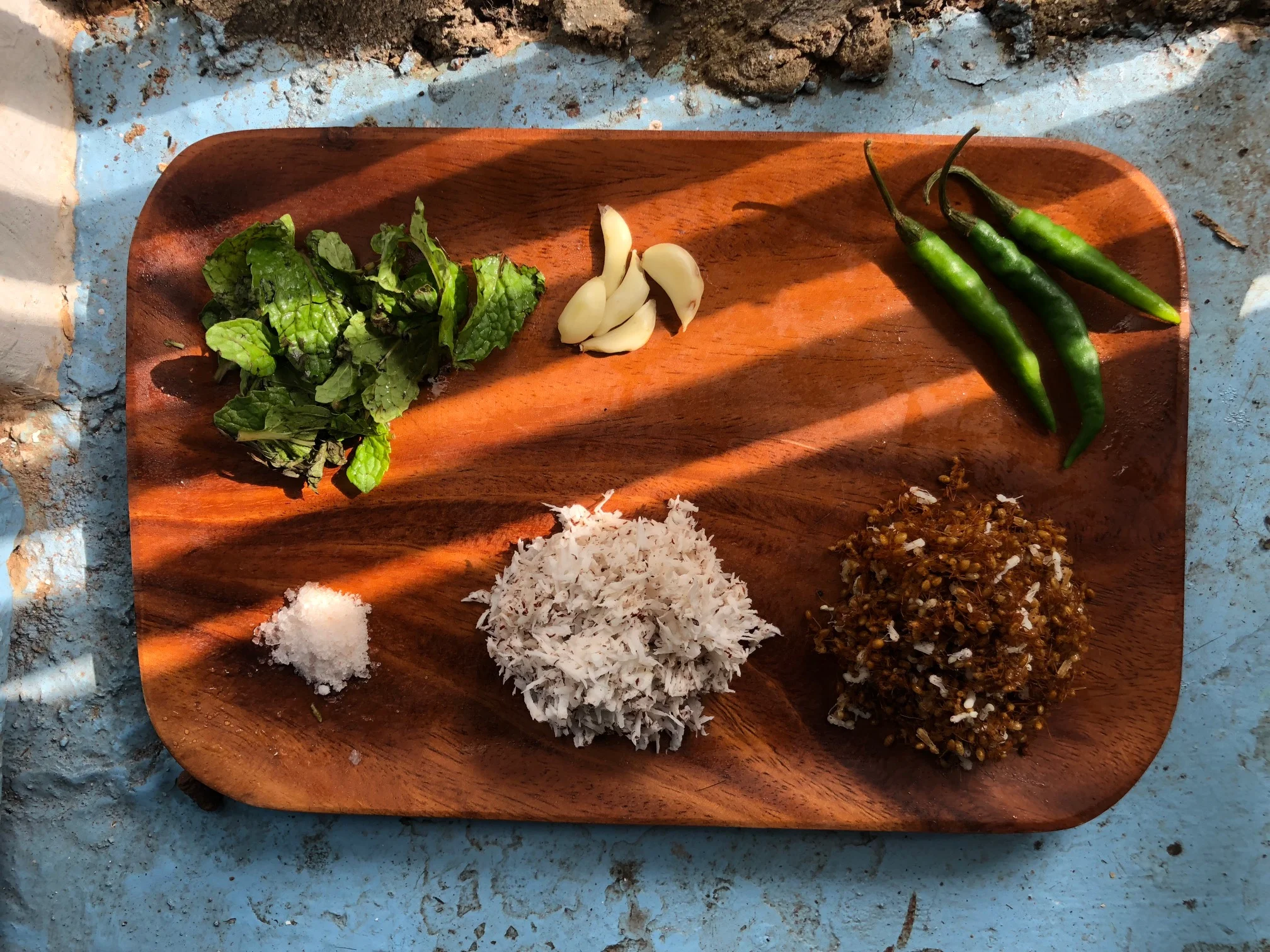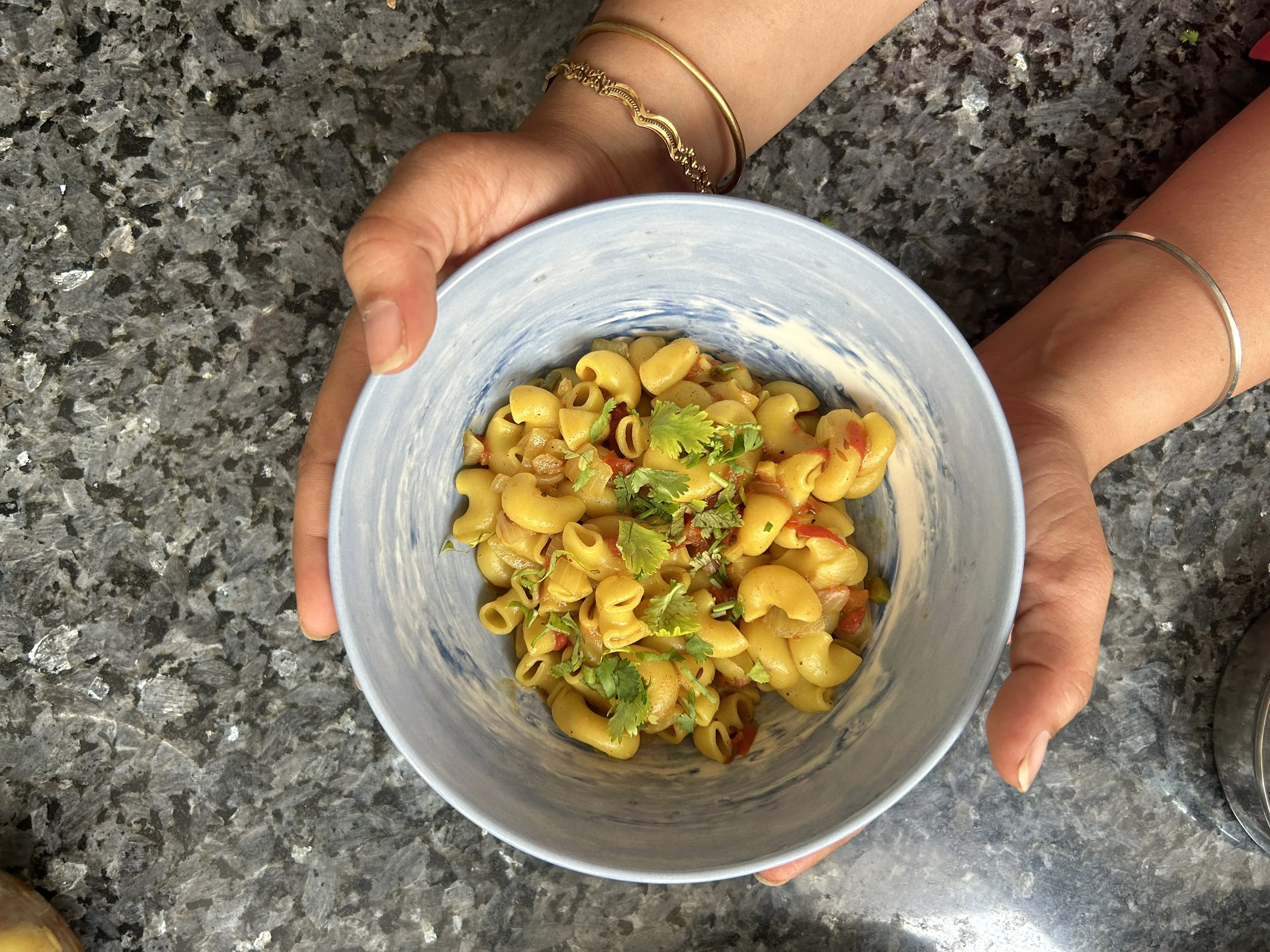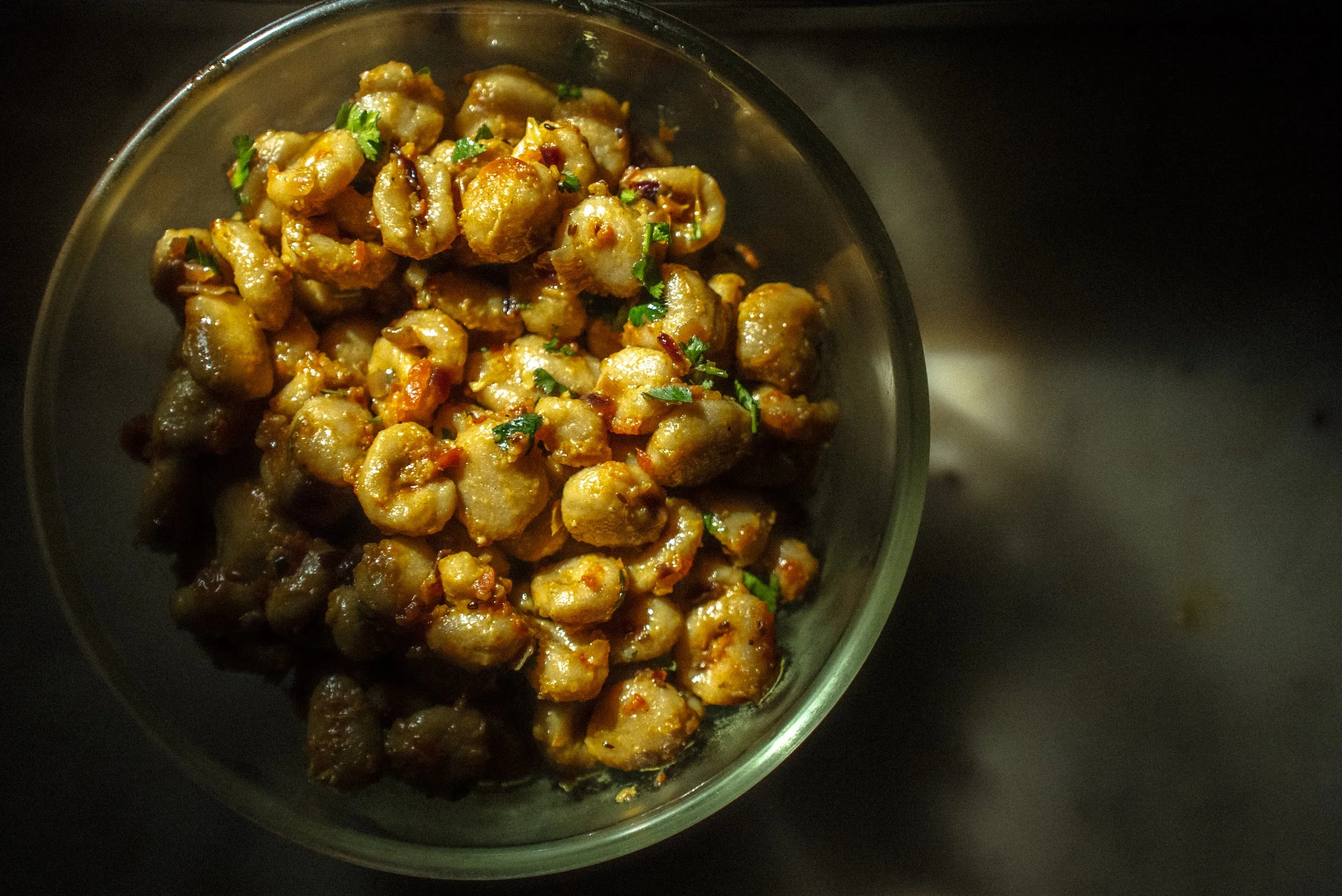Hungry for Insects

Tansha Vohra writes about foraging for weaver ants, and the benefits of augmenting our nutrition with insects.
Reading Yuval Noah Harari’s Sapiens, I find myself fascinated by the section on hunter-gatherers. He describes our forager ancestors as those who “mastered not only the surrounding world of animals, plants and objects, but also the internal world of their own bodies and senses.” Harari argues that our hunter-gatherer ancestors were the original “affluent members of society,” in that they had a better knowledge of their environment and body, on an individual level, than we do today. They worked fewer hours, were protected from malnutrition and starvation, and suffered from fewer infectious diseases. And the secret behind their success was simply a varied diet. The foragers didn’t stay in one place long enough to eat the same meal twice. Their constant movement ensured that they had enough food to choose from, and a number of sources for nutrition, should a few suddenly disappear.
I started to read Sapiens a month into my internship at Rosie and Peter’s edible forest garden in Goa. I am here to learn how to grow my own food and dive headfirst into the sub-strata of knowledge that sustains all life on Earth. On a typical morning at the farm, Peter, my fellow interns Neha and Vahishta, and I, sit under the canopy of fig and mimisop trees that ring with calls of pied lapwings and bramini kites, immersed in discussion. How do plants tell time? Why don’t we grow mango trees from seed? How do I get the damn rooster to stop attacking me? These conversations usually come to an abrupt halt when one of us jumps out of the hammock because a weaver ant had gone into a place no weaver ant should ever go. I give the ants a customary swipe, and for a brief moment, a scent rises to meet me — so sour, I can taste it on my tongue. On one such morning, after a particularly large ant had my eyes stinging with pain, Peter suggested we simply eat the lot. I laughed it off at first, but as it turns out, he was serious: our task for the day was set — we would do as the foragers once did.
Ingredients for weaver ant chutney
The fact that we found the idea of eating ants a little absurd, is telling: Insects have long graced the kitchens of communities in Nagaland, Arunachal Pradesh, Jharkhand, Chhattisgarh, and the Andaman Islands — to name a few. The Rabha people of Assam are known practitioners of entomophagy (the practice of eating insects). Ants, crickets, grasshoppers, snails and giant water bugs, amongst others, are an integral part of their culinary heritage. The methods of identifying, gathering, and preparing insects are ingrained in tribal custom; red ant eggs are consumed alongside a glass of rice beer. A tribe from the Boipariguda block in Koraput district of Odisha is famous for their consumption of red ants.
Locally known as Kai and Tapang, these ants build nests from January to May, and are consumed in abundance during season. The tribals believe that ant eggs keep the body cool in the summer heat, while the ants themselves improve eyesight. In some villages in Karnataka, the queen termite is fed to weak children, reiterating the idea that food is medicine.
But without the grace and timely precision of our ancestors, trained to effortlessly trap nests of ants, we had a rather hard time of it: First, we had to locate nests that were large enough. A considerable amount of gazing up at the crowns of trees, looking for leaves turned in, and any signs of ants scuttling about, finally led us to two large nests. It took five of us, a ladder, a large temperamental pair of secateurs, a weak disposition towards ant bites, an old garbage bag brimming with holes, and a lot of angry red ants hurling themselves, before we could get the job done. (It helps to remember that this was our very first time.) An hour later, we retreated to the kitchen on the farm, two nests triumphantly in hand. The contours of ant bites on our skin, nothing short of battle scars.
“Deconstructing the nest was a most glorious unravelling.”
A widely practiced method of harvesting weaver ants is to drop the nest in a tub of water, to then be sorted out. But the weaver ant contains formic acid in its abdomen, which lends the ant its distinctive sour taste. In an attempt to preserve that acid as best we could, we chose to freeze the nests in their entirety overnight. Deconstructing the nest was a most glorious unravelling; layer upon layer of silken thread disintegrated, giving us access to the inner recesses of their sanctuary. The nest opened up and out poured thousands of ants, their eggs, and the scent of acid so strong it tingled the back of our throats.
Our first iteration was a simple ant chutney — we wanted the ant to be the star of the show. Neha fit a mortar between her feet, and gracefully ground the ants into a fine paste. I grated a coconut as Vahishta went into the garden to pick out chillies and greens. Peter in the meanwhile, gently fried some ants until they turned a deep amber. How many different ways would this ingredient lend itself? Could it be used in place of lemon to make chilled ant tea? Would it allow us to replace gongura in a mutton curry? Would it be too much to fry the ants and use them as a base for the chutney itself? We had collected enough ants to last us months — variations were a necessity.
My search for ant recipes online led me to papers on the evolving role of insects in our current food systems. I found the UN’s Food and Agricultural Organization publication Edible Insects: Future Prospects for Food and Feed Security which describes a world in the near future, ridden with famine and a total population of over 9 billion people. The agricultural revolution that converted Sapiens from foragers and hunter-gatherers to farmers, and all the subsequent calamity caused in its wake, is slowly coming to light. The publication states that “insects as food and feed emerges as an especially relevant issue in the twenty-first century due to the rising cost of animal protein, food and feed insecurity, environmental pressures, population growth and increasing demand for protein among the middle classes.” Insects are high in protein, calcium, iron and zinc. They lend themselves as feed for animals as well as humans, and their rapid reproduction rates means that their population decline is unlikely. Harvesting insects is also low-tech, and involves low capital investment. The argument simply presents itself for the taking.
Could a solution to tomorrow’s problems simply be to adopt some of the ways of our ancestors? It would require us to go back and observe — to see what we find, when we find it, and how we could eat it. It would mean that people must come together to form that orchestra — this was never designed to be a one man show (try catching an ant nest alone!). This solution insists that we look at life beyond that which has been confined by the myths born of the agricultural revolution. We must become explorers again, filled with curiosity and the vitality of life.
Until then, here's our recipe for Weaver Ant Chutney to help you get started.
Words and photographs by Tansha Vohra.
MORE FROM THE GOYA JOURNAL









